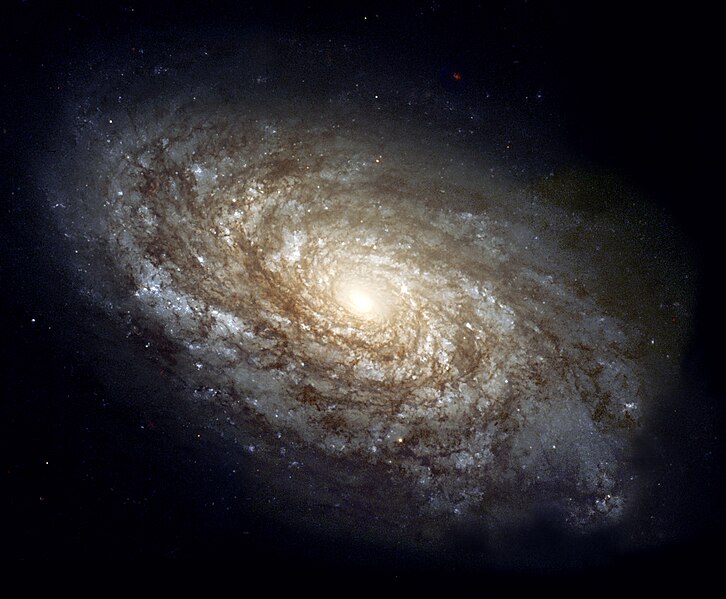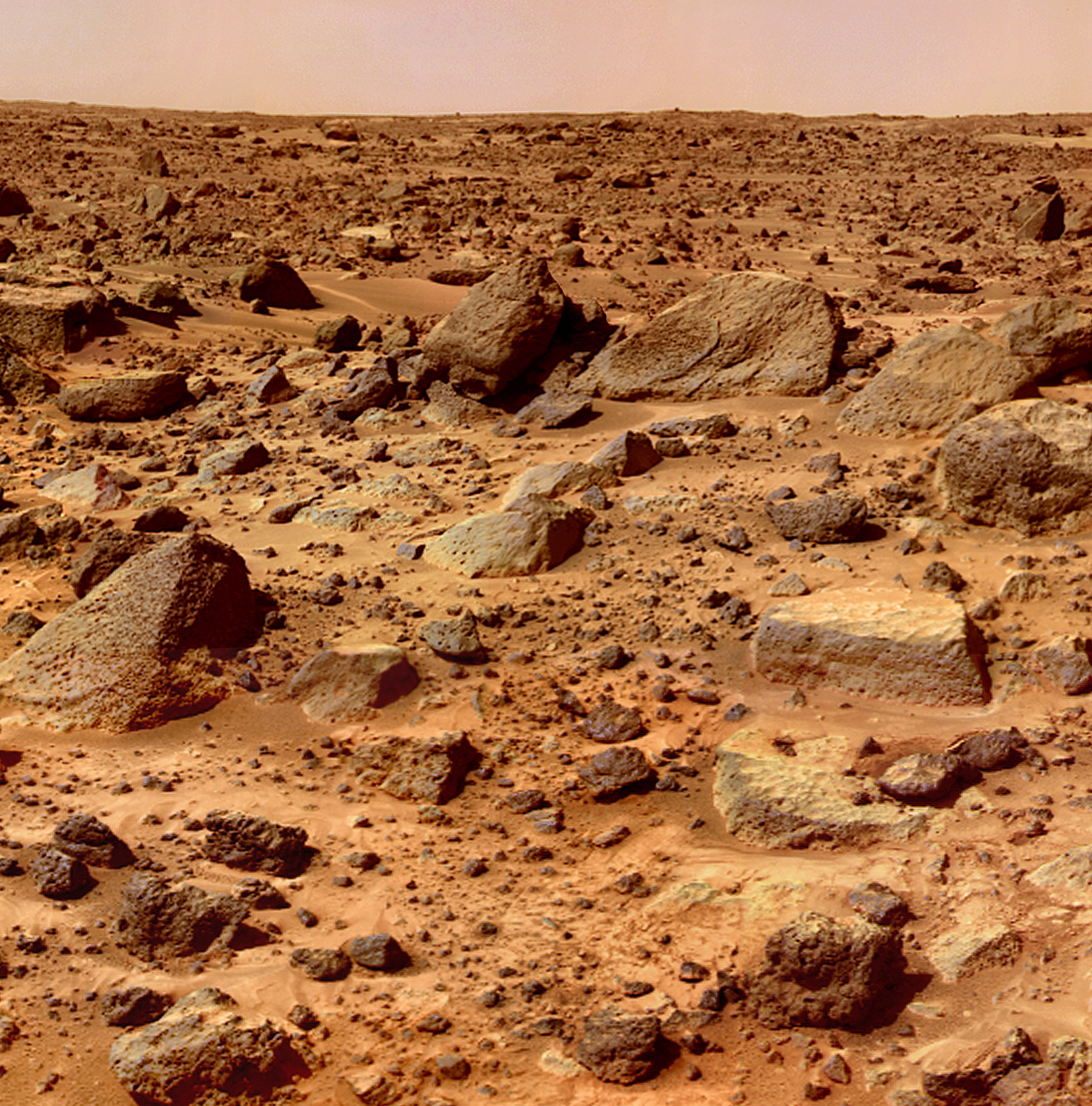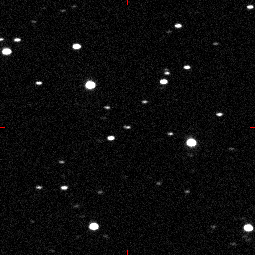If you understand evolutionary biology in its infinitely indifferent glory, a few interesting ideas emerge. The ambient musician Moby once said "we are all made of stars," and in a way, the statement couldn't be more correct. The Big Bang flung dense burning matter toward every corner(?) of the known universe some 13.8 billion years ago, expanding spacetime in the process. All tangible matter that we sit on, sleep on and brush our teeth with, has its roots in that single heated event. If you talk about the age of your body, you're referring to its current arrangement of molecules. But the atoms themselves were created in the centres of stars, which all trace their history to the beginning of existence.
Fast forward now to the birth of our solar system. Actually, first hold on for a moment while we ponder something interesting. Isn't imagination amazing? If you stretch your imagination from the moment of the Big Bang to the beginnings of our solar system, which is but a speck in a galaxy in a universe of billions of galaxies, your imagination has just traveled through 9 billion years of history. If your imagination took three seconds to do that (and ended at the very edges of the known universe), then because speed =distance/time, the speed of your imagination in kilometres per second would be 9 billion years multiplied by the speed of light, divided by three seconds. Remember to convert the 9 billion years into seconds first. The equation would be 9,000,000,000 X 31,536,000 (seconds in a year) X 299,792 (speed of light in km per sec) divided by 3. Now this may be a trivial observation, but it's remarkably fast. Granted, your imagination probably skipped a few details along its epic journey. Hmm, now if only I could finish my PhD at the speed of imagination.
Anyway, your mental bookmark should now be at the beginning of our solar system. Imagine a giant molecular cloud of gas and dust floating in the darkness of space. This enormous cloud would eventually give birth to several stars, including our own Sun. Gravitational compression occurs after a shockwave event passes through the cloud, almost certainly from a distant supernova. This causes the angular momentum of our patch of dust to increase, while the dust itself condenses and gains rotational speed. Gravity's influence then gets to work on the details, collecting 99.8632% of the entire mass of the cloud into the centre of a rotating sphere. The large blob in the centre eventually passes a critical mass, and the sheer weight of gravity causes ignition in the centre and an explosion of fusion energy. This blob has just become our Sun. But angular momentum manages to keep some of the matter spinning in orbit around the Sun, and these patches of dust eventually collect into smaller blobs themselves, and harden in their centres. These outliers are destined to become the planets of our solar system and their moons.
Now there are only two kinds of planets we need to think about here, seeing as poor old Pluto was recently demoted. There are the terrestrial, or 'rock' planets (Mercury, Venus, Earth and Mars), and the gas giants (Jupiter, Saturn, Uranus and Neptune). The gas giants are huge bundles of clouds, gas and lightning, at the centre of which is a much smaller sphere of extremely condensed metal. For example, if you were standing on Jupiter, you would actually be standing on an extremely flat land of metal, with supersonic winds and high levels of radiation. You would also be dead. Luckily our imagination gets around such inconveniences by not actually putting us there in the first place. Fantasy has its dangers.
For the purposes of this blog post, we will not focus on the gas giants, which are unlikely to harbour any life. And the purpose of this post is to talk about how life possibly began and what it is now, in a purely scientific sense. So we're going to leave the gas giants alone now, and focus on the terrestrial planets, particularly the Earth.
In the beginning, the Earth was a very inhospitable place with a lot of volcanic activity and minimal atmosphere. But all magma eventually cools into rock. In the process, the magma releases dissolved gases into the atmosphere. A planet like Mercury, which is lifeless (as far as we know), is basically a large rock, with bits of broken rock on the surface.
But things are happening on Mercury. It's not the same as it was a few thousand years ago. That's because the radiation from the sun, as well as surface winds are eroding the surface. Rocks on the surface are slowly eroding away, due to the forces of nature. The process of rock erosion is not much of a change, but a change nonetheless.
On a lifeless Earth, and for all terrestrial planets without life, this ongoing erosion of rock is the only process that can cause change. The driving forces are wind, oxidation and radiation from the sun. And there's also meteorite impact, which is another very important phenomena.
As far as the vast majority of real scientists are concerned, life on Earth probably began soon after the formation of an atmosphere and water on the surface. Because water ice in space is invariably laced with impurities, it is always classified as a rock rather than a mineral. So we can think of water as melted rock on the surface of a rocky Earth. And you may also like to think of sand as small, tiny rocks, if you like. I certainly do.
So the Earth, once upon a time, was just a lot of different kinds of rock and no life. At this historical point in time, the Earth gets peppered with comets, which are themselves also rocks. But these are special rocks. Traveling through space as stone and dirty ice, they also contain amino acids dissolved in their centres. Amino acids are the building blocks for all bacterial, archaea, protist, plant, fungi and animal life.
So the comets brought amino acids and other chemical goodies that were dissolved within them, crashing into the Earth's warm oceans, heated by the Sun in the day and cooling off at night. At some point in time during millions of years of oceans with chemicals being warmed and cooled, the very first simple forms of life grew from a chance collision that was statistically likely to happen over such a long time. If there really is a deity that deserves worship, it would be Time itself. Its sheer magnitude and vastness eclipse the majority of other claimed miracles. The parting of oceans is but child's play, when one considers that the entire history of the existence of those oceans, is, for want of a better analogy, but an infinitesimal drop in the galactic ocean of time.
What we know is that phospholipids (chemical molecules containing phosphorus), can also spontaneously form micelles in warm water. Micelles are tiny microscopic bubbles that protect whatever is contained inside, from the outside. This is the concept of homeostasis, a prerequisite for all living organisms. And if you look at the tiny membranes of bacteria, you'll notice that they're made predominantly from phospholipids. Albeit, a little more complex nowadays. Could it be that all chemical life began from non-life? Lee's Korea Blog would like to politely put forth the notion here that unless you're worshipping a deity other than Time, it's the only likely conclusion that remains.
The beginnings of primitive life was just small simple molecular bubbles that doubled their numbers over time. Some bubbles began to collect interesting chemical bi-products in their centres, which became the essence of the cytoplasm. From this, constant trial-and-error over billions of generations formed more complex organisms. How did we Homo sapiens arise out of all this? Well, the fossil record shows that Neanderthals first emerged around 600,000 years ago. And it took 400,000 of those years for us to evolve from the common ancestor of the Neanderthal to anatomically modern humans. We achieved behavioural modernity around 50,000 years ago. In other words, we monkeys have been behaving in human-like ways for only 1/100,000th of the Earth's history. On the other hand, very simple, single-celled life has been here for more than 3/4 of the Earth's history.
But let's take a step back now and think about how this all started. There was the Earth, which was rock, and water on the surface, which is melted rock. These rocks were being changed by the processes of erosion. Then some meteorites (which are also rocks), which were floating around in space, happened to collide with the Earth. This released their amino acids and phosphorus into our warm oceans. These chemicals eventually formed tiny micelles, which later became life. In a nutshell, the universe is made up of a whole bunch of very hot and cold rocks.
So my point is, you and I are simply a curious part of the larger process of rock erosion. This process has been going on for countless centuries and will no doubt continue to do so for centuries more.
So my point is, you and I are simply a curious part of the larger process of rock erosion. This process has been going on for countless centuries and will no doubt continue to do so for centuries more.
But you can comfort yourself in the idea that we're all made of stars.







7 comments:
Having lived my teen years through the 1980s, I grew up on a diet of Carl Sagan and his TV series "Cosmos." Much like Moby, Sagan once famously said in one episode, "We are the starstuff of the universe." That's always stuck with me.
"In a nutshell, the universe is made up of a whole bunch of very hot and cold rocks. So my point is, you and I are simply a curious part of the larger process of rock erosion."
Yes: moving down from the cosmic scale and thinking of local history in terms of rock-and-roll is also good.
Haha, my Dad once said the same thing. I asked him what the point of anything was, when time and the universe is so vast. He said that we don't exist on a cosmic scale, so we should live according to local rules.
nice.
For some reason this reminded me of my eighth grade science project where we were asked to create an alien. I'm not sure what the point of the project was, but I created an alien that I thought could theoretically exist.. a sort of mouse looking creature that was red colored to blend in with the rocks of mars and breathed whatever the the atmosphere of mars is composed of. Something that wouldn't be caught on camera by mars rovers and such. And I was crushed because I got a B because my teacher didn't think it was creative enough compared to the stupid looking aliens my classmates made that looked like they were out of some alien horror movie.
I have rocks in my head!
...and we're all particles of the sun...???
Not quite. The atoms in our bodies were formed in the centres of other stars, not our sun. That's not a part of Rock Erosion Theory though... it's regular astronomy. RET is just the idea that life sprouts from the erosion of rocks over time
Post a Comment